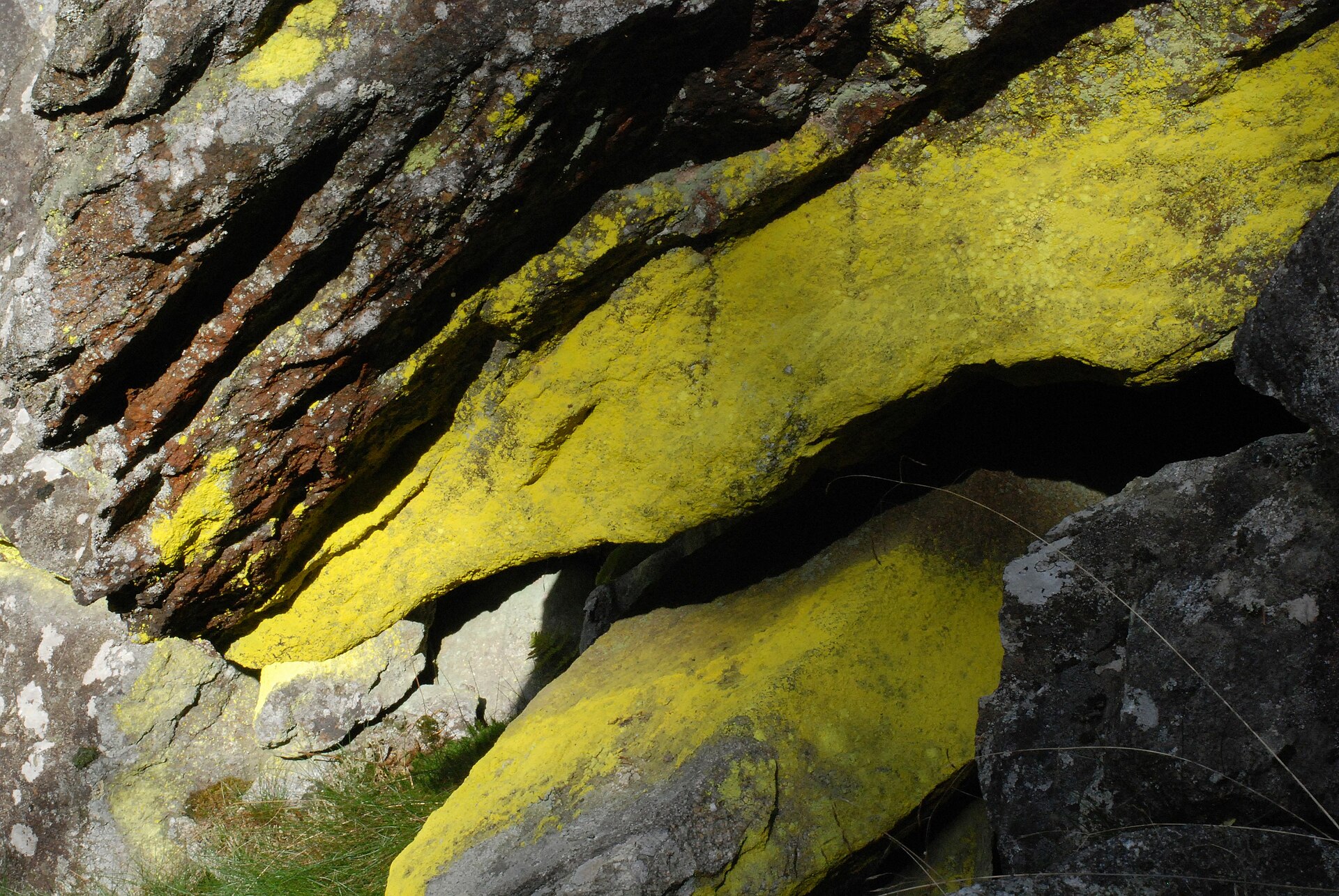Science
NASA Develops Synthetic Lichen for Future Mars Construction

NASA is advancing its plans for human settlements on Mars by developing innovative construction technologies that could significantly reduce costs and logistics. A key component of this effort involves utilizing Martian soil to create building materials, rather than transporting everything from Earth. Scientists are particularly focused on producing sulphur concrete, which could match or exceed the strength of conventional cement used on Earth.
Innovative Self-Growing Technology
At the forefront of this research is a new self-growing technology that uses a synthetic lichen system to aid future colonists in building structures. This innovative approach employs living biomaterials that can 3D print construction components directly from Martian soil, allowing for autonomous construction without human intervention.
Natural lichen comprises algae or cyanobacteria living symbiotically with fungi. These organisms exhibit unique properties, coming in various colors, sizes, and forms, and playing a crucial role in enhancing the ecosystem they inhabit. The synthetic lichen system under development leverages this symbiotic relationship to fabricate building materials suitable for the harsh Martian environment.
Research at both Texas A&M University and the University of Nebraska-Lincoln is exploring this technology as part of the NASA Innovative Advanced Concepts program. The goal is to utilize Martian regolith—the loose, fragmented surface material, including dust and rocks—to create a viable construction method for one of the most demanding environments known to humanity.
Advancing Construction Methods
Historically, various methods for bonding Martian regolith particles have been proposed, including magnesium-based and geopolymer solutions. Yet, these approaches often require substantial human oversight, making them impractical for a future with limited resources on Mars. As a result, researchers have turned their attention to microbe-mediated self-growing technologies.
Innovative designs have emerged, such as using bacterial biomineralization to bind sand particles or employing ureolytic bacteria to produce calcium carbonate for brick-making. Additionally, the exploration of fungal mycelium as a bonding agent is gaining traction. However, these methods currently depend on a single species or strain of microbes, necessitating continuous nutrient supplies and human intervention.
The Texas A&M approach introduces a synthetic community of multiple species, enhancing the system’s resilience and autonomy. This method involves heterotrophic filamentous fungi that produce bonding materials while surviving in extreme conditions. Paired with photoautotrophic diazotrophic cyanobacteria, which fix carbon dioxide and dinitrogen, this synthetic lichen system can thrive using only Martian regolith simulant, air, light, and an inorganic liquid medium.
The filamentous fungi play a dual role, binding metal ions to their cell walls and providing essential resources to the cyanobacteria, thereby promoting growth. Both organisms secrete biopolymers that facilitate adhesion among the regolith and precipitated particles, leading to the formation of solid structures.
Current practices in mycelial materials production already demonstrate their applications, including insulation and fire resistance. Studies indicate that these co-culture systems exhibit robust growth under conditions mimicking Martian soil without additional carbon or nitrogen sources.
The findings of this groundbreaking research are detailed in the Journal of Manufacturing Science and Engineering, in a paper titled “Bio-Manufacturing of Engineered Living Materials for Martian Construction: Design of the Synthetic Community.” As NASA continues to refine these technological advancements, the prospect of human habitation on Mars becomes increasingly tangible.
-

 Education3 months ago
Education3 months agoBrandon University’s Failed $5 Million Project Sparks Oversight Review
-

 Science4 months ago
Science4 months agoMicrosoft Confirms U.S. Law Overrules Canadian Data Sovereignty
-

 Lifestyle3 months ago
Lifestyle3 months agoWinnipeg Celebrates Culinary Creativity During Le Burger Week 2025
-

 Health4 months ago
Health4 months agoMontreal’s Groupe Marcelle Leads Canadian Cosmetic Industry Growth
-

 Science4 months ago
Science4 months agoTech Innovator Amandipp Singh Transforms Hiring for Disabled
-

 Technology4 months ago
Technology4 months agoDragon Ball: Sparking! Zero Launching on Switch and Switch 2 This November
-

 Education4 months ago
Education4 months agoRed River College Launches New Programs to Address Industry Needs
-

 Technology4 months ago
Technology4 months agoGoogle Pixel 10 Pro Fold Specs Unveiled Ahead of Launch
-

 Business3 months ago
Business3 months agoRocket Lab Reports Strong Q2 2025 Revenue Growth and Future Plans
-

 Technology2 months ago
Technology2 months agoDiscord Faces Serious Security Breach Affecting Millions
-

 Education4 months ago
Education4 months agoAlberta Teachers’ Strike: Potential Impacts on Students and Families
-

 Education3 months ago
Education3 months agoNew SĆIȺNEW̱ SṮEȽIṮḴEȽ Elementary Opens in Langford for 2025/2026 Year
-

 Science4 months ago
Science4 months agoChina’s Wukong Spacesuit Sets New Standard for AI in Space
-

 Business4 months ago
Business4 months agoBNA Brewing to Open New Bowling Alley in Downtown Penticton
-

 Business4 months ago
Business4 months agoNew Estimates Reveal ChatGPT-5 Energy Use Could Soar
-

 Technology4 months ago
Technology4 months agoWorld of Warcraft Players Buzz Over 19-Quest Bee Challenge
-

 Business4 months ago
Business4 months agoDawson City Residents Rally Around Buy Canadian Movement
-

 Technology2 months ago
Technology2 months agoHuawei MatePad 12X Redefines Tablet Experience for Professionals
-

 Technology4 months ago
Technology4 months agoFuture Entertainment Launches DDoD with Gameplay Trailer Showcase
-

 Top Stories3 months ago
Top Stories3 months agoBlue Jays Shift José Berríos to Bullpen Ahead of Playoffs
-

 Technology4 months ago
Technology4 months agoGlobal Launch of Ragnarok M: Classic Set for September 3, 2025
-

 Technology4 months ago
Technology4 months agoInnovative 140W GaN Travel Adapter Combines Power and Convenience
-

 Science4 months ago
Science4 months agoXi Labs Innovates with New AI Operating System Set for 2025 Launch
-

 Technology4 months ago
Technology4 months agoNew IDR01 Smart Ring Offers Advanced Sports Tracking for $169










